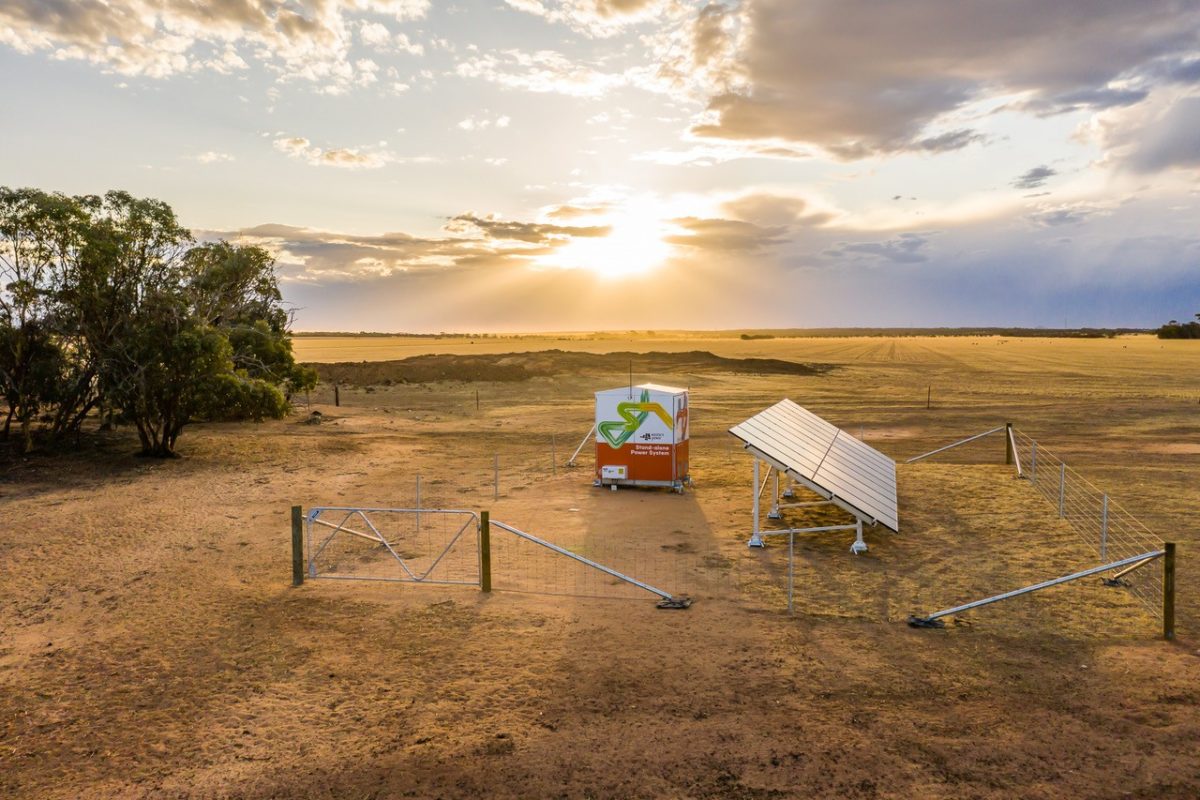The Western Australian State Government-owned Western Power has installed its first stand-alone power system (SPS) for a community group.
Greening Australia’s 740-hectare Nowanup property is located near Boxwood Hill, right at the end of a spur line, meaning that it invariably suffers innumerable power outages when a storm or bushfire or any other such exertion interrupts the powerline anywhere on its run.
“Power failures have been frequent,” said Greening Australia’s Barry Heydenrych, “and particularly given our line of work, bushfires are a constant concern. A big bushfire would damage all the good work we’ve been doing.”
“Stand-alone power systems directly benefit our State by improving power reliability, facilitating greener energy and supporting community organisations and businesses,” said WA Energy Minister Bill Johnston.
The installation of a solar SPS, featuring energy storage and a backup generator, means the property is now largely self-sufficient. Moreover, with less overheads brought on by ageing assets, the SPS system is also a significant improvement to the property’s aid conservation efforts and cultural tourism.
Nowanup is part of Gondwana Link, a biodiversity and revegetation project led by Greening Australia and the Indigenous Nowanup Rangers that spans 1,000 km across the bottom of the state from the south-west corner to the edge of the Nullarbor Plain. “With a reserve to the east and to the west, this property is an important part of the Gondwana Link pathway as it creates connectivity between those two reserves,” noted Heydenrych.
Over the past decade, Greening Australia has restored around 350 hectares of farmland back to wildlife habitat
SPS self-sufficiency now also means that Curtin University can expand its use of the property as a bush campus, particularly for Noongar learning and teachings. Nowanup Noongar Elder Eugene Eades said that he was proud “to see this innovative learning concept coming to life and look forward to the many benefits it will bring for indigenous and non-indigenous people, by helping to ensure Noongar culture and history continues to be taught for generations to come.”
“The collaboration with Greening Australia highlights how alternative energy solutions, such as stand-alone power systems, can make a real difference to regional conservation and cultural tourism,” continued Johnston.
For Greening Australia, probably the most satisfying aspect is that the energy is coming from solar, “which is something that resonates with everyone.”
SPS is coming to the fore in WA, particularly in regional and remote areas, which, for WA, is most places. Remote areas, often inhabited by just a few people, are connected to the grid via long powerlines at the mercy of interruptions and natural events. In 2016, Western Power, WA’s publicly owned grid operator, decided to trial six SPS on properties across the Great Southern, including Lake King, West Lake and Ongerup. The trial sought to determine whether SPS could provide customers with a more reliable, and better quality, power supply.
“There’s been two winners from this trial,” says SPS Program Manager Margot Hammond. “Firstly, the customers, who have more reliable and better quality power,” mainly provided by solar. And secondly, “the taxpayers of WA. Now that this technology has demonstrated the significant benefits for customers, it could be utilised throughout our rural and regional parts of the network as a cost-effective alternative to replacing poles and wires.”
Of course, it needs be said that the saving made on not needing to constantly maintain and replace poles and wires is a saving for all Western Australians. Stand-alone systems are not stand-apart systems, they are a unifying solution.
This content is protected by copyright and may not be reused. If you want to cooperate with us and would like to reuse some of our content, please contact: editors@pv-magazine.com.









1 comment
By submitting this form you agree to pv magazine using your data for the purposes of publishing your comment.
Your personal data will only be disclosed or otherwise transmitted to third parties for the purposes of spam filtering or if this is necessary for technical maintenance of the website. Any other transfer to third parties will not take place unless this is justified on the basis of applicable data protection regulations or if pv magazine is legally obliged to do so.
You may revoke this consent at any time with effect for the future, in which case your personal data will be deleted immediately. Otherwise, your data will be deleted if pv magazine has processed your request or the purpose of data storage is fulfilled.
Further information on data privacy can be found in our Data Protection Policy.